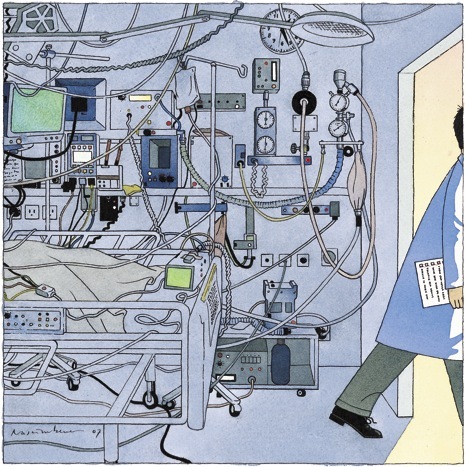Life has gotten pretty complex. Especially in hospitals. I just read this New Yorker article and found it really fascinating. It’s about a genius doctor that got obsessed with process and devices a checklist that is saving hundreds of millions of dollars and thousands of lives. If it is so useful for them, just think of how else it could be useful.

The article also shares a pretty cool ancedote about the B-17 bomber and how it was the first plane that required a checklist on takeoff and landing. He writes:
On October 30, 1935, at Wright Air Field in Dayton, Ohio, the U.S. Army Air Corps held a flight competition for airplane manufacturers vying to build its next-generation long-range bomber. It wasn’t supposed to be much of a competition. In early evaluations, the Boeing Corporation’s gleaming aluminum-alloy Model 299 had trounced the designs of Martin and Douglas. Boeing’s plane could carry five times as many bombs as the Army had requested; it could fly faster than previous bombers, and almost twice as far. The flight “competition,” according to the military historian Phillip Meilinger, was regarded as a mere formality. The Army planned to order at least sixty-five of the aircraft.
A small crowd of Army brass and manufacturing executives watched as the Model 299 test plane taxied onto the runway. It was sleek and impressive, with a hundred-and-three-foot wingspan and four engines jutting out from the wings, rather than the usual two. The plane roared down the tarmac, lifted off smoothly, and climbed sharply to three hundred feet. Then it stalled, turned on one wing, and crashed in a fiery explosion. Two of the five crew members died, including the pilot, Major Ployer P. Hill.
An investigation revealed that nothing mechanical had gone wrong. The crash had been due to “pilot error,” the report said. Substantially more complex than previous aircraft, the new plane required the pilot to attend to the four engines, a retractable landing gear, new wing flaps, electric trim tabs that needed adjustment to maintain control at different airspeeds, and constant-speed propellers whose pitch had to be regulated with hydraulic controls, among other features. While doing all this, Hill had forgotten to release a new locking mechanism on the elevator and rudder controls. The Boeing model was deemed, as a newspaper put it, “too much airplane for one man to fly.” The Army Air Corps declared Douglas’s smaller design the winner. Boeing nearly went bankrupt.
Still, the Army purchased a few aircraft from Boeing as test planes, and some insiders remained convinced that the aircraft was flyable. So a group of test pilots got together and considered what to do.
They could have required Model 299 pilots to undergo more training. But it was hard to imagine having more experience and expertise than Major Hill, who had been the U.S. Army Air Corps’ chief of flight testing. Instead, they came up with an ingeniously simple approach: they created a pilot’s checklist, with step-by-step checks for takeoff, flight, landing, and taxiing. Its mere existence indicated how far aeronautics had advanced. In the early years of flight, getting an aircraft into the air might have been nerve-racking, but it was hardly complex. Using a checklist for takeoff would no more have occurred to a pilot than to a driver backing a car out of the garage. But this new plane was too complicated to be left to the memory of any pilot, however expert.
With the checklist in hand, the pilots went on to fly the Model 299 a total of 1.8 million miles without one accident. The Army ultimately ordered almost thirteen thousand of the aircraft, which it dubbed the B-17. And, because flying the behemoth was now possible, the Army gained a decisive air advantage in the Second World War which enabled its devastating bombing campaign across Nazi Germany.
If a new drug were as effective at saving lives as Peter Pronovost’s checklist, there would be a nationwide marketing campaign urging doctors to use it. The article talks about how simple checklists reduced infections in ICU’s from 14% to zero in 12 months. It’s a great article and makes me think that I could use a few more simple checklists at my work.